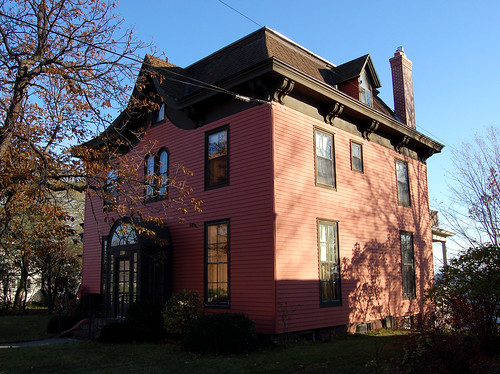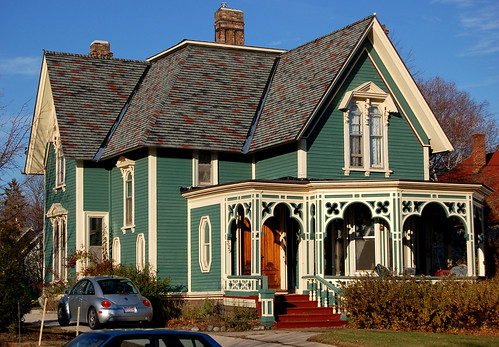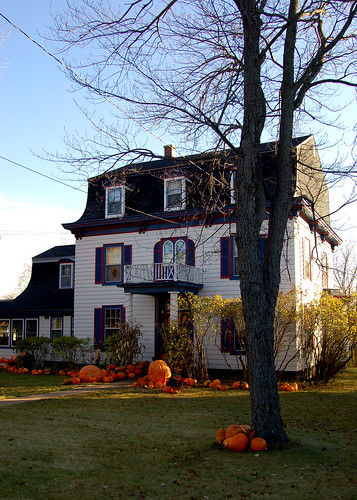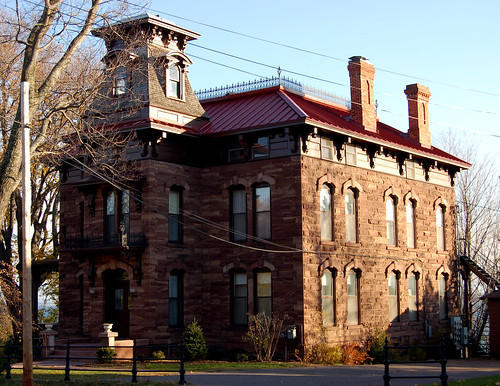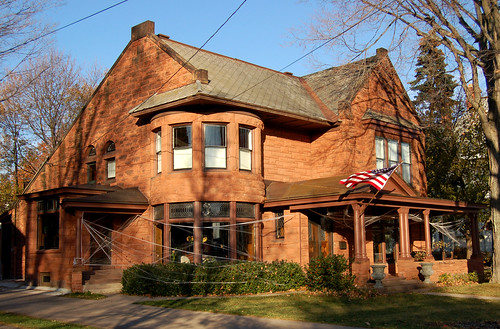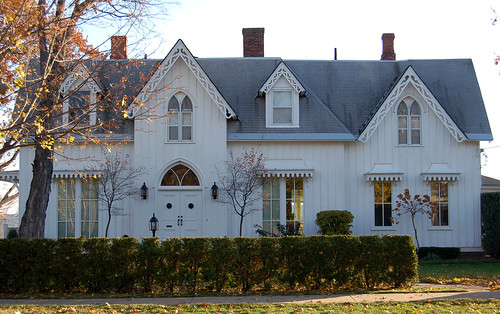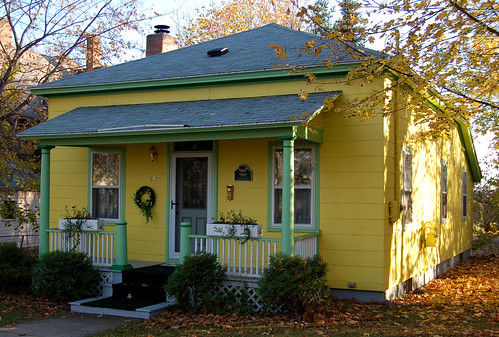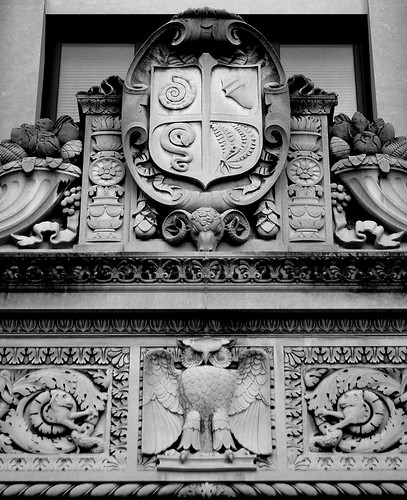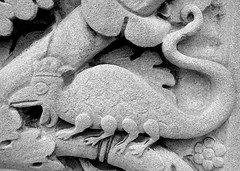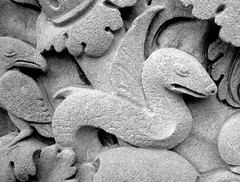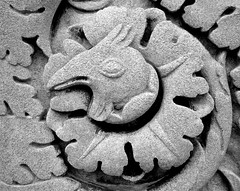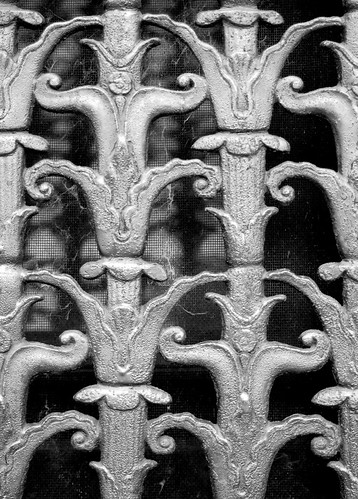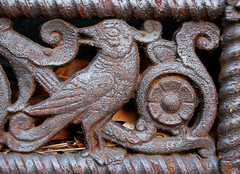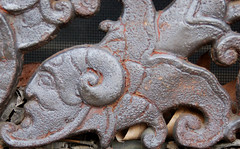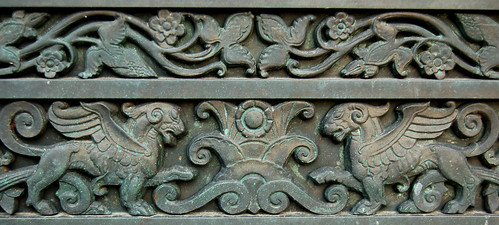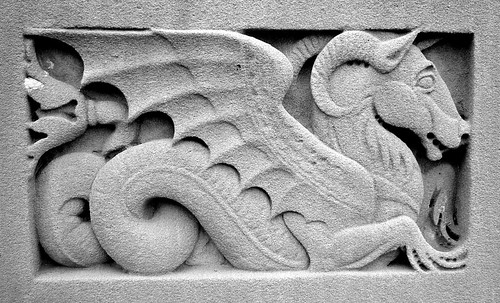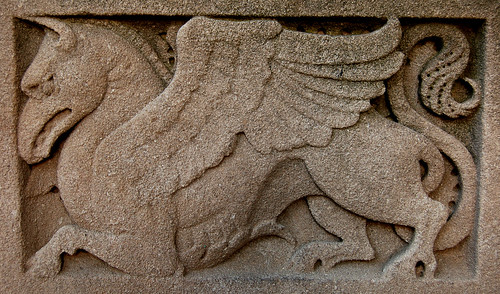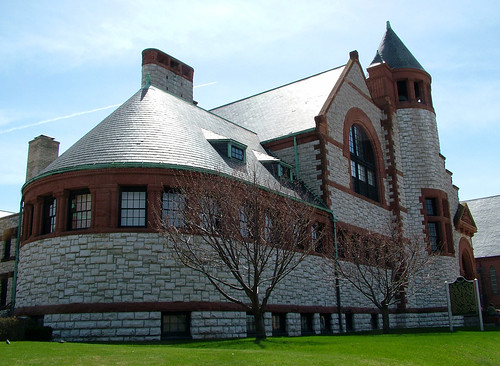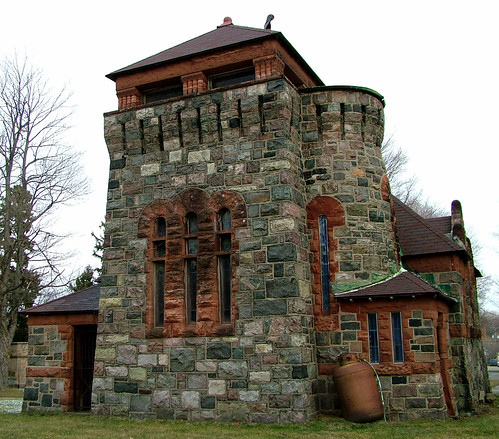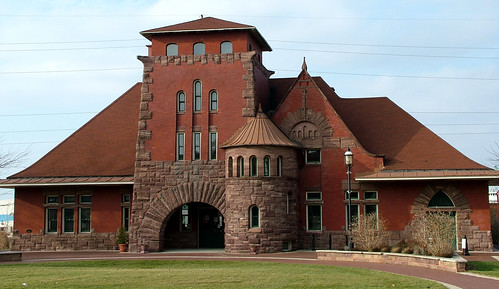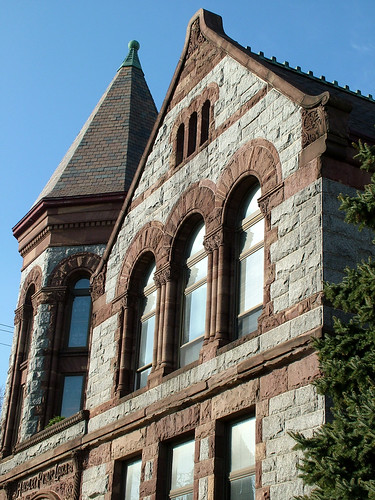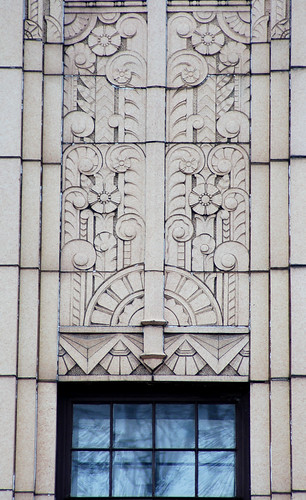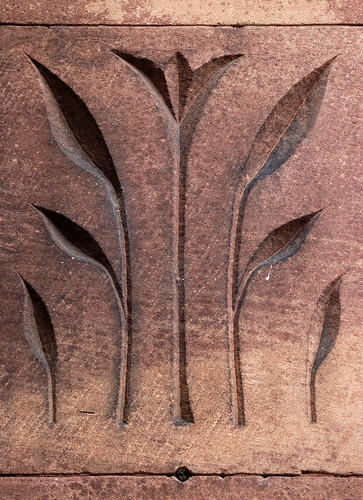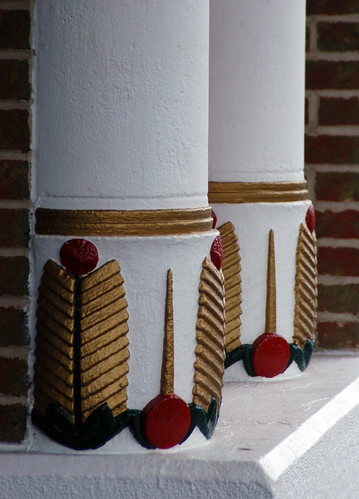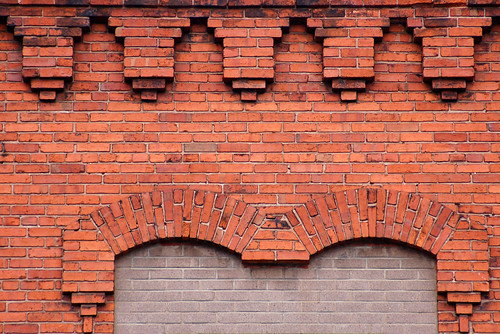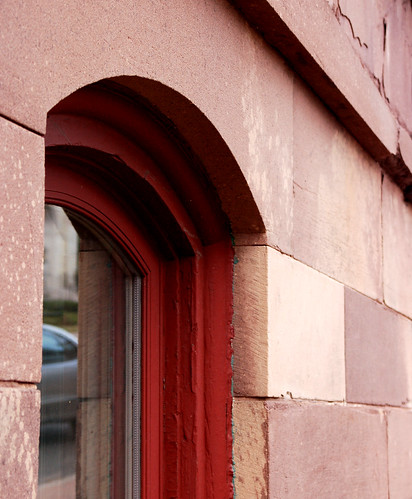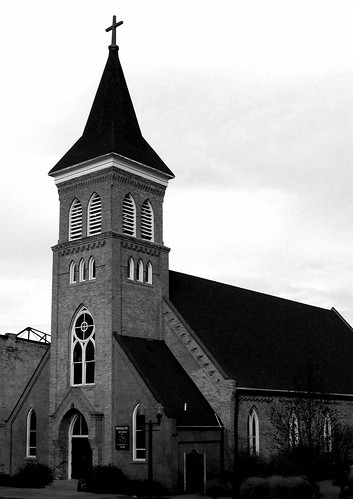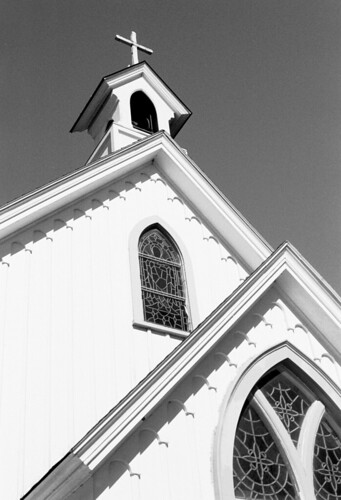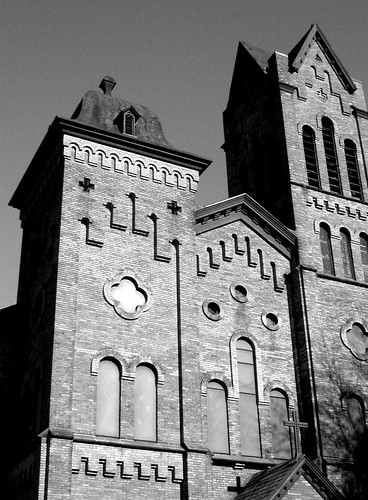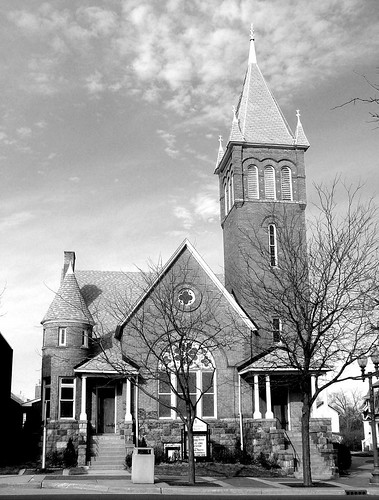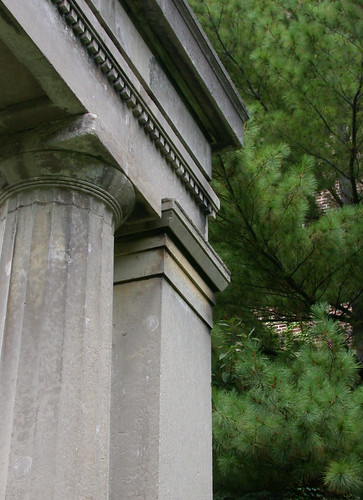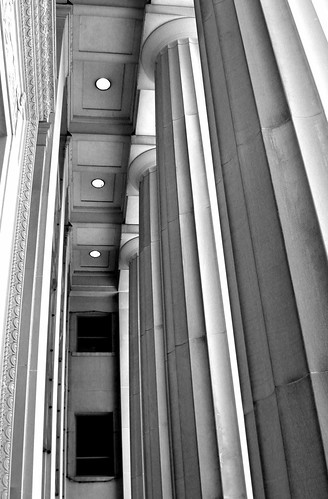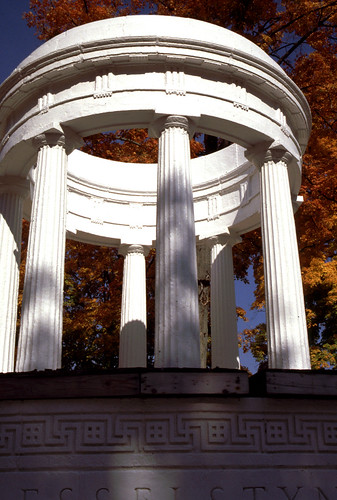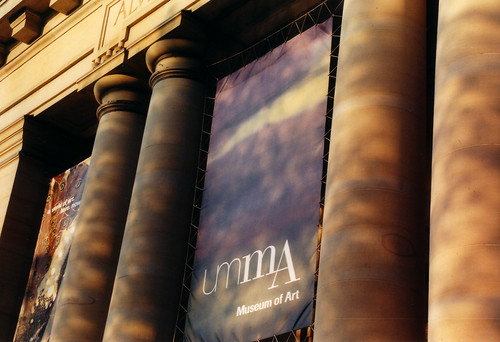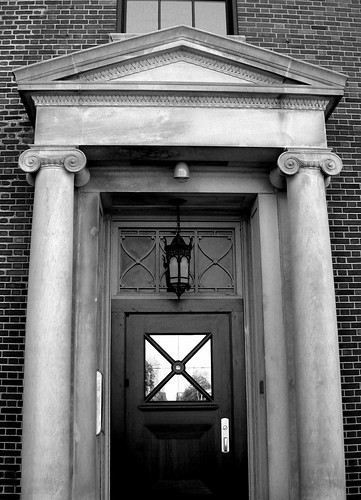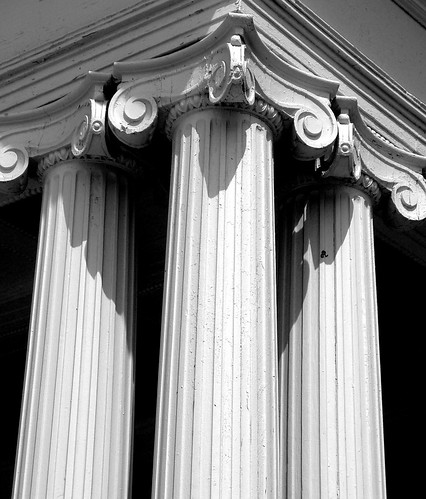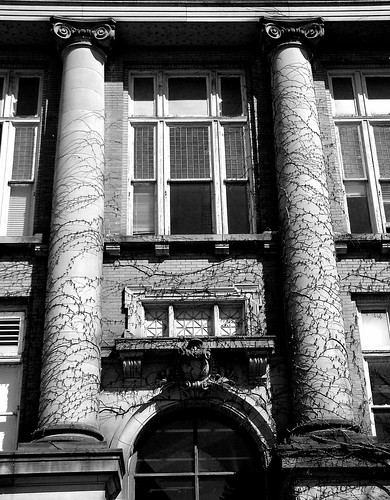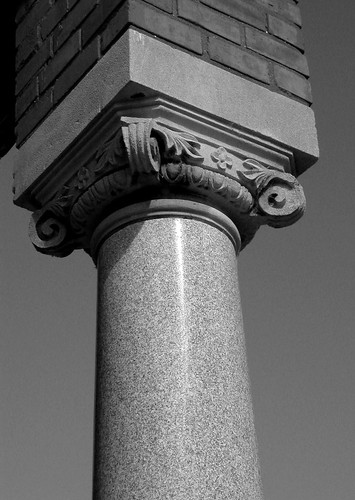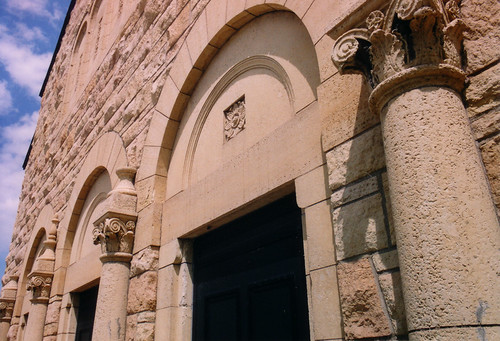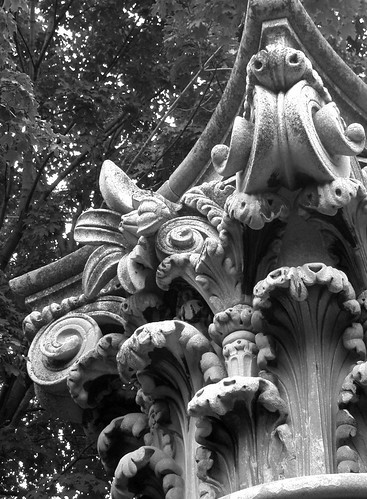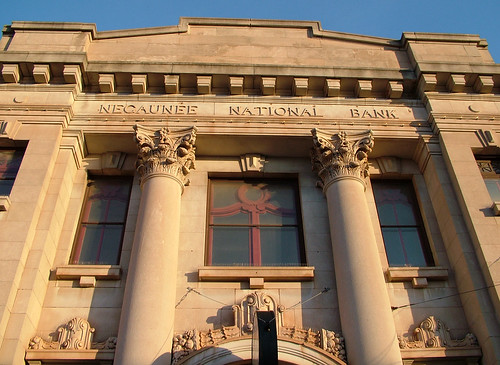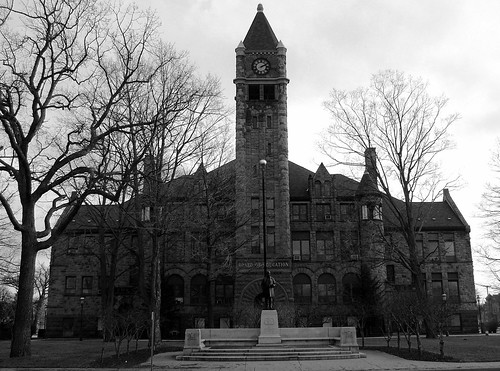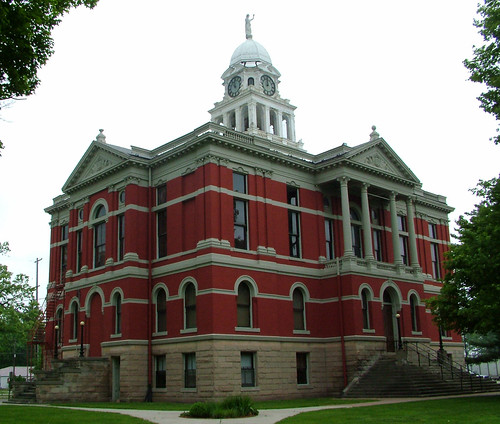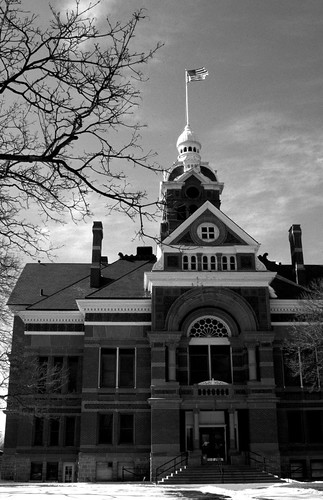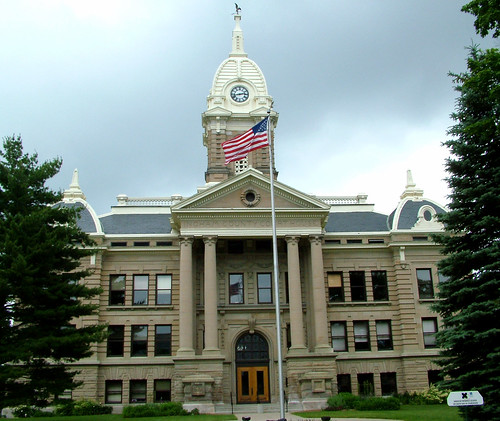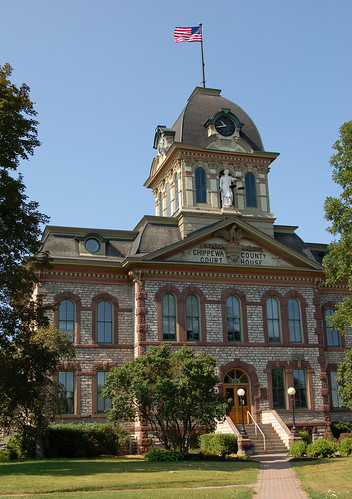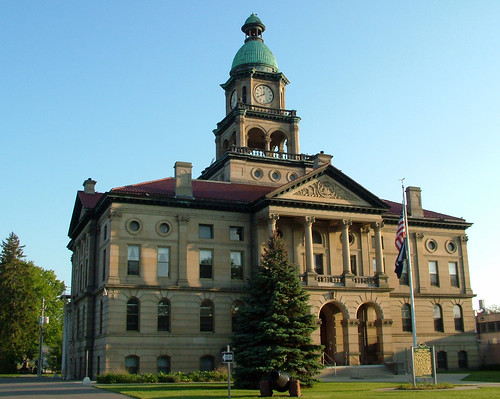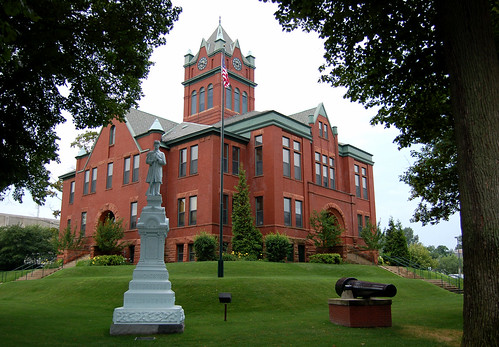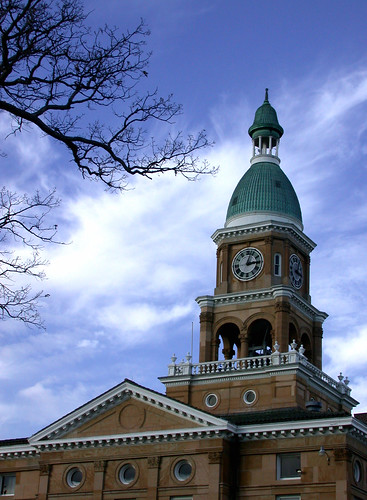One nice thing about having an older university in town is that established colleges tend to showcase beautiful architecture. The University of Michigan in Ann Arbor is no exception, as its campus is full of many gorgeous buildings, including several museums. Besides the Kelsey Museum and the Art Museum, which will be featured on this blog in due time, U of M also has the wonderful Exhibit Museum of Natural History.
The Ruthven Museums building, which today holds not only the Exhibit Museum, but also the Museums of Zoology, Paleontology, and Anthropology, was completed in 1928. While the architect was Albert Kahn, much of the ornamentation -- including the two pumas that guard the entryway -- was executed by Carlton Angell. Built in the Classical Revival style (with a touch of Art Deco elements sneaking in), the museum is four stories tall. Less than half of the building is open to the public; the rest is devoted to research and housing the collections.

Two large Ionic columns stand above the main entrance.
The building is beautifully decorated, both inside and out. The rotunda features a coffered ceiling covered in gilded plaster rosettes; travertine Doric columns flank the graceful staircase. The exterior of the museum is embellished with many playful creatures, some fantastical and others scientifically accurate.
The lovely decorations above the main entraceway, sculpted by Carlton Angell.
Surrounding the doorway, many strange fauna can be seen, including the basilisk, a serpent, and a bird.
Delightful details can be found on the museum's wrought iron grills.
The front doors are decorated beautifully, all the way down to these tiny griffins, only a few inches off the ground.
These mythical creatures are sculpted into the platforms that hold the pumas. Currently the pumas are gone -- they are being cast into bronze and won't make their appearance until the spring of 2007.
. . .
The next time you visit the Exhibit Museum, take time to observe all the exterior ornamentation on this building -- not only around the front entrance, but on the sides of the museum, as well. You will find some surprises!
